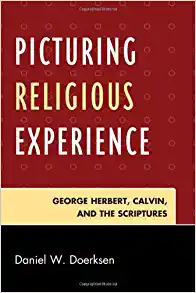
Daniel W. Doerksen
Hardback
November 2011 • ISBN 978-1-64453-111-2 • $102.95
Paperback
November 2011 • ISBN 978-1-64453-112-9 • $50.00
* E-Book Available
Order Online
Little has been said about the relationship of Herbert’s writings to those of John Calvin, yet the latter were abundant and influential in Herbert’s Church of England. Accordingly Picturing Religious Experience studies Herbert’s poetry in relation to those writings, particularly regarding “spiritual conflicts,” which the poet himself said would be found depicted in his book of poems. Much more than is generally realized, Calvin wrote about the experience of living the Christian life—which is also Herbert’s subject in many of his poems. Altogether, this study maintains that Herbert owes to his religious orientation not just themes or details, but an impulse to observe and depict the inner life, and scriptural patterns which significantly contribute to the substance and literary excellence of The Temple.
About the Author
Daniel W. Doerksen is Honorary Research Professor at the University of New Brunswick.
